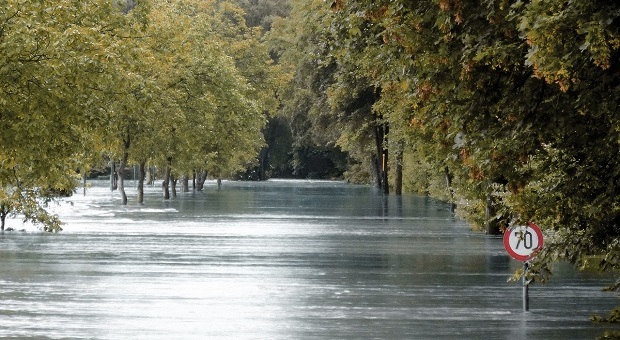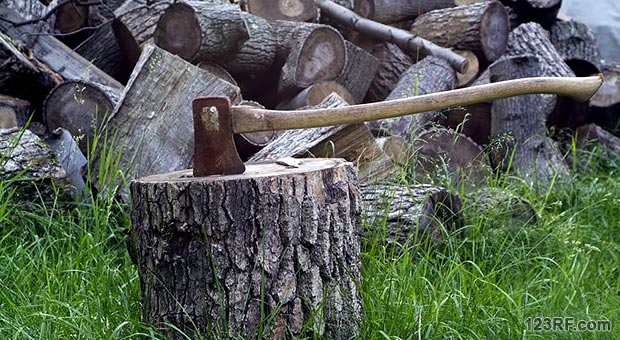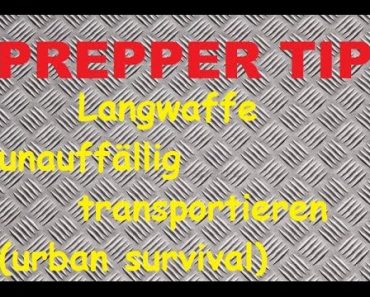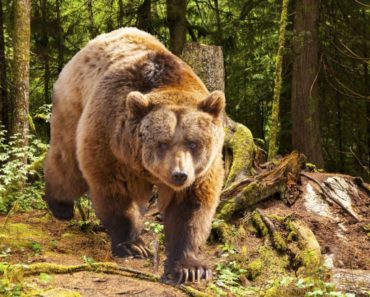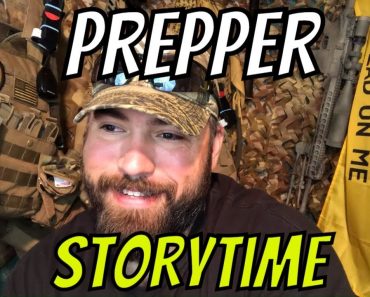Whether setting up a permanent survival retreat or just setting up camp for the night, choosing the suitable terrain can have a significant impact on your chances for survival.
The spots that might seem intuitively like those you’d want to choose often have some fatal flaw or other, making them less than suitable. Yet without thinking the process through, most of us would choose one of those instantly, seeing the advantages while overlooking the disadvantages.
There are two conflicting concerns when selecting any wilderness site; resources and defense. Of course, those aren’t the only concerns, as we need to consider protection from the weather (more on that in a minute). But the two I mentioned first are the ones we need to be most concerned about, simply because they conflict with each other. Making matters worse, they are also both critical to our survival.
Survival in the wild means overcoming three distinct enemies:
- Predators (both two and four-legged ones)
- The weather
- Our need for food and water
Any one of those can be a big challenge all by itself, but when you’ve got to deal with all three, there’s little room for error before the mistakes can start piling up to deadly levels.
I suspect there’s a significant flaw in most of our thinking, which can exacerbate this entire situation. That is our expectation that once we get to our chosen patch of wilderness, we’ll be safe. The big flaw in this thinking, though, is that we’re assuming that all the city dwellers will stay in the city while we bug out to the wild. It doesn’t matter that this contradicts our belief that the roads will be turned into parking lots by people fleeing the cities; it’s almost as if we expect those people to disappear into thin air once we manage to get away from them.
I don’t know where those people are going to go, any better than you do. But I’m sure there are plenty of hunters, fishermen, campers, and others who love the great outdoors amongst them. These people have guns and know how to use them, even if they couldn’t qualify as Marine Marksman.
Let’s look at these three factors, working from the easiest to overcome to the hardest to overcome. I’m doing it that way because when we’re looking for a place to set up our survival retreat, that’s the best way to find what we need.
Terrain and Weather
Perhaps you’ve never thought about how terrain can affect your ability to withstand adverse weather, but anyone who has lived through a few storms out in the wild knows how true this is. The correct terrain can go a long way towards providing at least some protection from adverse weather. But, of course, we’re talking about protection from wind and rain, as well as their affects.
Flooding
The first consideration here is flooding. Thunderstorms can dump vast amounts of water, leading to flash flooding. That flooding isn’t just limited to the area where it rained either. Flash flooding can happen far downstream of the storm, far enough away that you might not even realize the storm had happened. Avoid low-lying ground, especially where there are signs that water had previously flowed through the area, no matter how old those signs are.
As part of this, avoid any canyon or ravine, especially in the mountains. Rainwater naturally flows downhill, filling up those ravines with fast-moving water. That can happen so quickly. You might not have time to pack up and get out.
That means avoiding camping beside any flowing water or body of water. That’s a good idea anyway, as animals need access to that water regardless. Since they’ll mostly avoid any scent of man, camping by the water denies them the chance to drink. Animals that don’t avoid your scent can be considered dangerous, either because of apex predators or disease.
Wind
Wind does two things that can make camping out in the wild uncomfortable. The first is to take away the bubble of warm air that our body naturally produces by radiation. That means that we’re constantly trying to warm the air around our bodies, causing our bodies to burn more energy. The other is to push rain towards us. Unfortunately, driving rain is more dangerous than average rain, as it soaks into clothing more rapidly.
Wind also affects your fire, both in the ability to start the fire and how effectively the fire can provide you with heat. In the same way, wind can drive away from the bubble of warm air around your body, and it can blow the heat the fire is producing away from you by blowing away the air warmed by that heat.
It’s always essential to select terrain that protects from the wind. This is best accomplished by staying on the downwind side of a cliff face or hill. But it can be achieved by taking advantage of a large boulder or tight copse of trees if it’s not possible to get on the downwind side of the hill or if no hill is available.
Rain
Avoiding flooding is only part of avoiding the effects of rain. But as much as possible, we want to avoid the rain itself. Clothing that has been soaked by rain not only doesn’t keep us warm, but it can cause us to lose our body heat considerably faster than if we were naked. The only clothing that retains any of its insulation value when wet is wool, which retains 50% of its insulation value.
It’s hard to use terrain to our advantage in protecting ourselves from rain unless we stumble upon a cave or overhanging embankment. But that embankment could be dangerous from a flooding viewpoint, so it should only be used with extreme caution. Instead, we’ll usually find the best overhead protection in nature is trees, some of which do an excellent job of deflecting water off to the side.
Terrain and Resources
Terrain always affects the availability of resources, as well as our access to those resources. Therefore, while it might be necessary to go a considerable distance to have better access to help, we should at least select the best possible location within our operating area, giving us the best access to the resources available.
Water
Water is the most critical resource in the wild. We need constant access to it if we’re going to survive. That means that a portion of every day’s activities is going to be gathering and purifying water.
This doesn’t necessarily mean being right where the resources are, as much as it means being where we can easily get to those resources. We don’t necessarily need to be right on the water to make use of it; we need to be close enough to the water to get water without it becoming a major chore. A couple of hundred yards or even a quarter-mile from the water isn’t a big deal, but anything more than that is.
Wood
One resource that needs to be considered is wood, specifically wood for maintaining your fire and building a shelter. That doesn’t necessarily mean that you need to be in the woods, just that you need woods nearby. A location on the edge of the woods might be better than one amid the woods.
As much as possible, it makes sense to have woods uphill of you, rather than downhill. Having it uphill makes the job of hauling the wood to your survival retreat easier, as it’s easier to pull it downhill than uphill. For that matter, you can start a log rolling and let it move downhill all the way, just as long as there’s something to stop it before it crashes into your camp.
Food
Even though food is not near as necessary as water or wood, we will need a regular food source during any long-term bug out. That probably means growing it more than hunting for it, as growing food is far more efficient.
That’s not to say that we should ignore the possibility of hunting, fishing, and gathering. With that in mind, being able to establish camp in a remote enough area that others aren’t going to get all the fish and game before we can is a good idea. It’s also a good idea to do our hunting farther away from home first to leave the game in a place closer to our retreat.
Terrain and Defense
The trickiest part of this whole thing is defending ourselves from attack. Ask anyone with an understanding of military strategy and tactics, and they’ll tell you that terrain is of supreme importance. Taking control of the suitable terrain can give you a considerable advantage over an enemy, even an enemy who outnumbers you.
High Ground
Having the high ground is always considered to be advantageous. Shooting down at someone is more accessible, with a greater chance of hitting the target than shooting up at them. But, over and above that, the person trying to attack the high ground has the physical battle of climbing up to their level. That slows them down and saps their energy, reducing their effectiveness.
However, it’s not necessarily a good idea to be right on the crest of a hill or ridge, as you can easily be silhouetted, making it easy to see you. So instead, seek out the military crest. That’s the point just below the crest, where your head is even with the altitude of the crest. That’s low enough to keep you from becoming skylined while still giving you the possibility of seeing what’s on the other side.
Cover and Concealment
Wherever you are, you want to have good cover and concealment. While concealment is proper, hiding you from an attacker, the cover is much more critical. If things ever come down to a firefight, hiding behind rocks and large trees can stop a bullet and give you a distinct advantage. If the attacker can’t hit you, they can’t defeat you.
The balance tips significantly towards your side if you have good cover, as the attackers are forced to expose themselves to get at you. Take the time to plot out where they can come from and whether any of those avenues give them cover or even concealment to make their approach. If such places exist, they reduce your advantage extensively. Please find a way of neutralizing those avenues, either by blocking them, setting tripwires or by having a means of attacking anyone who comes through them.
Clear Avenues of Approach
While you need good cover and concealment, you want to deny it to your attackers as much as possible. Ideally, that means selecting a site where they have to cover open ground while you are hidden away behind good cover. But, unfortunately, that puts them at risk. The smart ones will see this and go somewhere else to bother someone else, while the not-so-smart ones will be an easy target for you.
Keep in mind that no defense is perfect, and no terrain works out totally to your advantage. Take the time to have someone in your team go out there and find avenues of approach to hide. See if you can see them while coming up with those avenues of approach, and then try to find a vantage point where someone from your team can keep that under observation. The enemy can read the terrain too, so expect that if you can see that secret way, you won’t be the only ones who can.
Escape Route
Always have a planned escape route with a predetermined rally point. The route needs to provide you with cover if possible or at least concealment along the way. Keep your packs near the head of this escape route so that everyone can grab them as they make good on their escape.
The rally point needs to be far enough away from your camp that you won’t be visible while catching your breath and getting organized, yet close enough that everyone can reach it in a matter of minutes. It’s not a new campsite by any means, just someplace to gather together and start your journey to your next location. The idea is more about getting everyone together in one place so that you can travel together.
As part of that, at least have a tentative secondary location that you’ll be heading for if you’re forced to abandon camp. For example, suppose we’re talking about your permanent survival retreat. In that case, you’ll want the new location far enough away so that whoever attacked your retreat won’t just be able to follow you or attack you once again after establishing themselves in what had been your retreat.
With that in mind, your travel from your old retreat to your new one needs to be by deceptive routes that are hard to find. Go over rocky ground, only walking on the rocks, so you don’t leave any tracks. Spend time walking down a stream so your footsteps wash away. Make unexpected turns, changing your direction by 90 degrees. Mix it up, so you can keep them mixed up.
Putting This All Together
Don’t be surprised if you have trouble finding one location which meets all these needs. Everything in life is a series of compromises, and finding the ideal survival location is no different.
First, pick out the specific criteria that are the most important for your particular situation and concentrate on those. Then, if you can fulfill any of the others by tweaking your original plan slightly, do so.
Know what you can do without being willing to sacrifice those things or accept more difficulty achieving them. Then you’ll have the best possible location for your specific situation.


